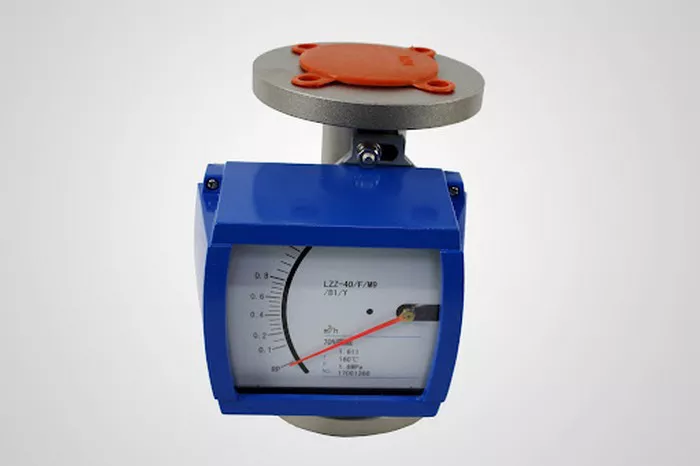Flow measurement is a crucial aspect of many industrial, commercial, and scientific applications. Among the various types of flow meters available, the transit-time flow meter stands out due to its accuracy, non-intrusiveness, and ability to measure a wide range of fluids. This article will delve into the working principles, types, advantages, limitations, and applications of transit-time flow meters to provide a comprehensive understanding of this essential measurement device.
What is a Transit-Time Flow Meter
A transit-time flow meter is an ultrasonic flow measurement device that determines the flow rate of a fluid by analyzing the time difference between ultrasonic pulses traveling in the direction of flow and against it. It operates on the principle that sound waves move faster when traveling with the flow of a fluid and slower when moving against it.
Unlike other flow meters, such as differential pressure, turbine, or magnetic flow meters, transit-time flow meters do not require physical contact with the fluid. This makes them highly desirable for measuring clean and non-aerated liquids.
Working Principle
The core concept behind transit-time flow meters is based on the time difference in ultrasonic pulses traveling upstream and downstream in a flowing fluid. Here’s how it works:
- Ultrasonic transducers are installed on the external or internal surface of the pipe, aligned at an angle to the fluid flow.
- One transducer acts as a transmitter, emitting an ultrasonic pulse that travels downstream with the flow, while the other transducer receives it.
- The process is reversed, where the second transducer transmits a pulse that moves upstream against the flow.
- The time taken for the ultrasonic pulse to travel downstream (T_down) and upstream (T_up) is recorded.
- The difference in these travel times (ΔT = T_up – T_down) is directly proportional to the velocity of the flowing fluid.
- Using known pipe dimensions and the velocity of the fluid, the flow rate (Q) can be calculated using the equation:Q=K×(T-up−T-down) where K is a calibration constant dependent on pipe geometry and fluid properties.
Types of Transit-Time Flow Meters
Transit-time flow meters are classified into two main types based on their transducer placement:
1. Clamp-On Transit-Time Flow Meters
- The transducers are mounted externally on the pipe’s surface.
- Ideal for non-invasive applications as they do not require pipe modifications.
- Commonly used for temporary flow monitoring or when process shutdown is not feasible.
2. Inline (Insertion) Transit-Time Flow Meters
- The transducers are installed inside the pipe, directly in contact with the fluid.
- Offers higher accuracy compared to clamp-on models.
- Suitable for permanent installations where direct fluid contact is acceptable.
Advantages of Transit-Time Flow Meters
Non-Intrusive Measurement
Clamp-on models eliminate the need for pipe cutting or process interruptions.
High Accuracy
Provides accurate readings (typically within ±1% of actual flow) for clean and homogeneous fluids.
No Moving Parts
Reduces maintenance costs and extends the meter’s lifespan.
Wide Range of Pipe Sizes
Can measure flow in pipes ranging from a few millimeters to several meters in diameter.
Minimal Pressure Drop
Unlike differential pressure flow meters, transit-time meters do not obstruct flow, ensuring no pressure loss.
Bi-Directional Measurement
Can measure flow in both directions, making them versatile for various applications.
Limitations of Transit-Time Flow Meters
Fluid Cleanliness Requirement
The presence of air bubbles, suspended solids, or turbulence can affect accuracy.
Dependent on Acoustic Properties
Variations in fluid density, temperature, or composition can impact ultrasonic signal transmission.
Installation Considerations
Requires careful transducer alignment and coupling for accurate readings.
Limited to Homogeneous Liquids
Not suitable for slurries, emulsions, or multiphase flows where different acoustic velocities exist.
Applications of Transit-Time Flow Meters
Due to their precision and ease of use, transit-time flow meters are employed in various industries, including:
Water and Wastewater Treatment
Monitoring clean water distribution and detecting leaks in municipal pipelines.
Oil and Gas Industry
Used for custody transfer of petroleum products and flow monitoring in pipelines.
HVAC and Energy Management
Helps in measuring chilled water, heating fluids, and energy usage in cooling/heating systems.
Chemical and Pharmaceutical Industries
Enables accurate flow measurement of non-corrosive chemicals and purified water.
Food and Beverage Processing
Measures the flow of juices, dairy products, and other liquid ingredients in hygienic environments.
Power Plants
Utilized for flow monitoring in steam generation, cooling water circulation, and fuel management.
Conclusion
Transit-time flow meters offer an efficient, accurate, and non-intrusive way to measure fluid flow, making them indispensable in many industries. While they excel in measuring clean and homogeneous fluids, they have limitations in dealing with multiphase or highly aerated liquids. Choosing the right type of transit-time flow meter—whether clamp-on or inline—depends on specific application requirements, installation feasibility, and desired accuracy levels. As advancements in ultrasonic technology continue, transit-time flow meters are expected to become even more reliable and adaptable for future industrial applications.

